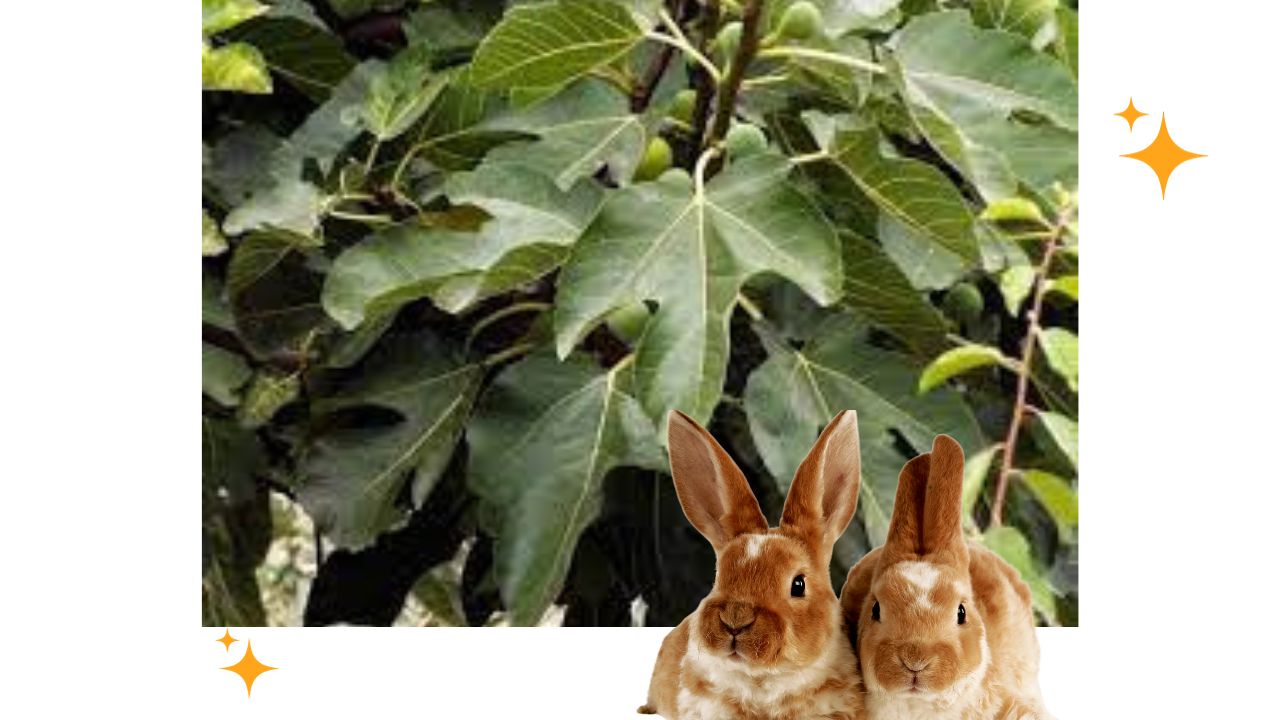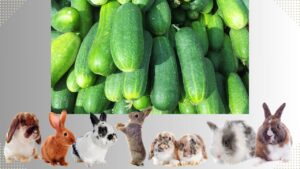Can rabbits safely munch on fig leaves? Discover the nutritional value and potential health benefits of feeding your furry friend fig leaves.
Learn how to properly prepare and introduce fig leaves into your rabbit’s diet. Find out the recommended serving size and explore alternative rabbit snacks.
With this authoritative guide, you can ensure your rabbit’s well-being and provide them with a variety of tasty and nutritious options.
So, can rabbits eat fig leaves? Let’s delve into the facts and serve your furry companion the best.
In This Article
- 1 Key Takeaways
- 2 Nutritional Value of Fig Leaves for Rabbits
- 3 Health Benefits of Feeding Fig Leaves to Rabbits
- 4 Potential Risks of Feeding Fig Leaves to Rabbits
- 5 How to Prepare Fig Leaves for Rabbit Consumption
- 6 Recommended Serving Size of Fig Leaves for Rabbits
- 7 Introducing Fig Leaves Into Your Rabbit’s Diet
- 8 Alternatives to Fig Leaves for Rabbit Snacks
- 9 Frequently Asked Questions
- 9.1 Can Rabbits Eat Fig Fruits as Well or Just the Leaves?
- 9.2 Are Fig Leaves Safe for Rabbits With Sensitive Digestive Systems?
- 9.3 Can Fig Leaves Be Fed to Rabbits as a Regular Part of Their Diet?
- 9.4 How Often Should Fig Leaves Be Included in a Rabbit’s Diet?
- 9.5 Are There Any Specific Breeds of Rabbits That Should Not Be Fed Fig Leaves?
Key Takeaways
- Fig leaves are generally safe for rabbits to consume, but potential allergies and toxicity should be considered.
- Feeding fig leaves to rabbits can provide health benefits such as improved digestion, nutrient absorption, immune system boost, and a healthy coat.
- However, there are potential risks associated with fig leaf consumption, including digestive issues and kidney stone formation, so careful monitoring is necessary.
- It is important to prepare and serve fig leaves properly, introduce them gradually, and balance them with other foods in a varied and balanced diet for rabbits.
Nutritional Value of Fig Leaves for Rabbits
You should consider the nutritional value of fig leaves for your rabbits.
While fig leaves are generally safe for rabbits to consume, it’s important to be aware of potential allergies and toxicity.
Fig leaf allergies can occur in rabbits, although they’re relatively rare. If you notice any signs of an allergic reaction, such as itching, redness, or swelling, it’s recommended to discontinue feeding fig leaves and consult with a veterinarian.
Additionally, fig leaves contain a substance called ficin, which can be toxic to rabbits in large quantities. It’s advisable to limit the amount of fig leaves given to your rabbits and offer them as an occasional treat rather than a staple part of their diet.
Always prioritize a balanced and varied diet for your rabbits to ensure their overall health and well-being.
Health Benefits of Feeding Fig Leaves to Rabbits
Feeding fig leaves to rabbits can provide them with various health benefits, such as improved digestion and enhanced immune function.
Fig leaves are rich in fiber, which aids in the movement of food through the digestive system, preventing issues such as constipation and gastrointestinal stasis.
Furthermore, fig leaves contain natural enzymes that assist in breaking down complex carbohydrates, making it easier for rabbits to absorb nutrients from their food.
Additionally, the antioxidants present in fig leaves can boost the immune system of rabbits, helping to protect them against diseases and infections.
Moreover, the nutrients found in fig leaves can have a positive impact on the health of a rabbit’s coat, promoting a glossy and lustrous appearance.
Overall, incorporating fig leaves into a rabbit’s diet can contribute to their overall well-being and vitality.
Potential Risks of Feeding Fig Leaves to Rabbits
Despite the potential risks, it’s important to be aware of the potential health benefits and drawbacks of feeding fig leaves to rabbits.
While fig leaves can provide some nutritional value to rabbits, they also come with potential side effects that shouldn’t be ignored.
One of the main risks of fig leaf consumption is the presence of ficin, an enzyme that can cause digestive issues in rabbits. This enzyme can interfere with the proper breakdown of food in the rabbit’s digestive system, leading to diarrhea, bloating, and discomfort.
Additionally, fig leaves contain high levels of calcium and oxalates, which can potentially lead to kidney stone formation in rabbits.
Therefore, it’s crucial to carefully monitor the amount of fig leaves given to rabbits and consult with a veterinarian to ensure their safety and well-being.
How to Prepare Fig Leaves for Rabbit Consumption
To properly prepare fig leaves for your rabbit, start by thoroughly washing them in cold water and then gently patting them dry with a clean towel.
Fig leaves can be a nutritious addition to your rabbit’s diet, as they’re rich in fiber, vitamins, and minerals. However, it’s important to prepare them correctly to ensure the safety and well-being of your pet.
After washing and drying the leaves, remove any stems or tough parts. Tear them into smaller, bite-sized pieces, making it easier for your rabbit to chew and digest.
Introduce fig leaves gradually into your rabbit’s diet, starting with small amounts and observing any potential digestive issues. Remember to always consult with a veterinarian to determine the appropriate portion size and frequency of incorporating fig leaves into your rabbit’s diet.
Recommended Serving Size of Fig Leaves for Rabbits
You should start by gradually introducing small amounts of fig leaves into your rabbit’s diet to determine the recommended serving size. Fig leaves can be a nutritious addition to your rabbit’s diet, but it’s important to understand the appropriate serving size to ensure your rabbit’s health and well-being.
Here are some serving size recommendations and feeding frequency guidelines for fig leaves:
- Start with small portions: Begin by offering a small piece of fig leaf to your rabbit and observe their response. If they tolerate it well, gradually increase the serving size over time.
- Monitor digestion: Pay close attention to your rabbit’s digestive health when introducing fig leaves. Watch for any signs of discomfort, such as bloating or diarrhea, and adjust the serving size accordingly.
- Balance with other foods: Fig leaves should be offered as part of a balanced diet. Make sure to provide a variety of fresh vegetables, hay, and commercial rabbit pellets to meet your rabbit’s nutritional needs.
- Feeding frequency: Fig leaves can be given to your rabbit as a treat, but not as a primary food source. Limit the serving size to a few leaves a couple of times per week to avoid overfeeding.
Introducing Fig Leaves Into Your Rabbit’s Diet
Including fig leaves in your rabbit’s diet can provide them with added nutrients and variety, while ensuring their digestive system remains healthy. However, it’s important to be aware of the potential risks associated with fig leaf toxicity and to choose the right types of fig leaves for your furry friend.
Fig leaf toxicity occurs when rabbits consume large amounts of fig leaves, which can lead to gastrointestinal upset and even liver damage. It’s crucial to introduce fig leaves gradually into your rabbit’s diet and monitor their response. Start with small quantities and observe any adverse reactions.
When selecting fig leaves for your rabbit, opt for the common fig (Ficus carica) or the Indian fig (Opuntia ficus-indica). These types of fig leaves are safe for rabbits and provide a range of nutrients, including fiber, vitamins, and minerals. However, it’s important to avoid feeding your rabbit other types of fig leaves, such as those from the Ficus benjamina or Ficus elastica plants, as they can be toxic to rabbits.
Alternatives to Fig Leaves for Rabbit Snacks
Have you considered trying other leafy greens as alternatives for your rabbit’s snacks, such as kale or spinach? While fig leaves can be a healthy rabbit treat, it’s important to provide a variety of options to ensure a balanced diet for your furry friend.
Here are four leafy greens that can serve as nutritious alternatives:
- Romaine Lettuce: Rich in fiber and low in calories, romaine lettuce is a great choice for rabbits. It provides essential vitamins and minerals while promoting proper digestion.
- Swiss Chard: Packed with antioxidants and vitamins A, C, and K, Swiss chard supports immune health and helps maintain healthy bones and teeth.
- Bok Choy: This leafy green is an excellent source of calcium and vitamin C. It aids in proper bone development and boosts the immune system.
- Dandelion Greens: High in fiber and antioxidants, dandelion greens promote healthy digestion and support liver function.
Remember to introduce new greens gradually and monitor your rabbit’s response. By offering a variety of leafy greens, you can ensure your rabbit receives a well-rounded and nutritious diet.
Frequently Asked Questions
Can Rabbits Eat Fig Fruits as Well or Just the Leaves?
Yes, rabbits can eat fig fruits and leaves together. However, it’s important to note that fig leaves should be given in moderation as they can cause digestive issues in rabbits if consumed in large quantities.
Are Fig Leaves Safe for Rabbits With Sensitive Digestive Systems?
Fig leaves can be problematic for rabbits with sensitive digestive systems. While they may provide potential health benefits, they can also act as potential allergens. It’s important to monitor your rabbit’s reaction and consult a veterinarian if necessary.
Can Fig Leaves Be Fed to Rabbits as a Regular Part of Their Diet?
Fig leaves are safe for rabbits with sensitive digestive systems. They have nutritional value and potential health benefits. Incorporating fig leaves as a regular part of their diet can be beneficial for rabbits.
How Often Should Fig Leaves Be Included in a Rabbit’s Diet?
To properly introduce fig leaves into a rabbit’s diet, gradually incorporate them in small amounts. Monitor your rabbit’s response and adjust accordingly. Fig leaves can provide potential health benefits such as added fiber and vitamins.
Are There Any Specific Breeds of Rabbits That Should Not Be Fed Fig Leaves?
Certain rabbit breeds, when it comes to fig leaves, may pose potential risks. It’s crucial to consider the specific breeds and their dietary needs to ensure the utmost care and well-being.





